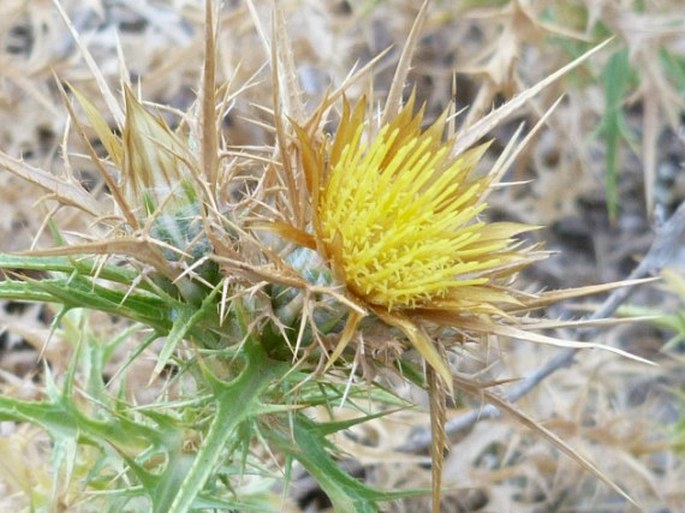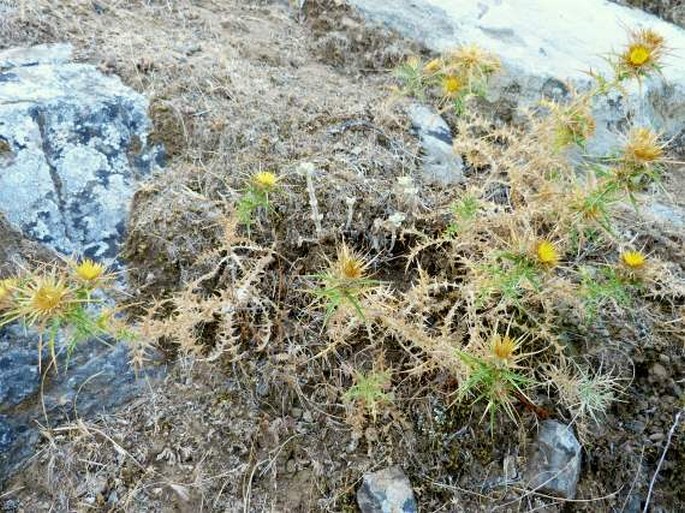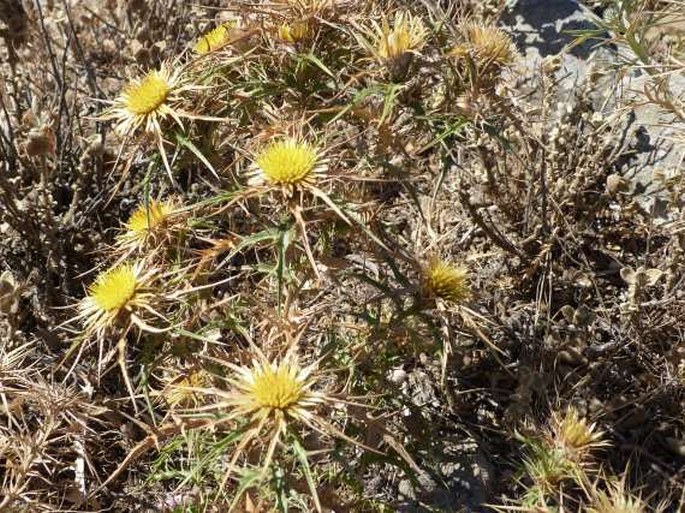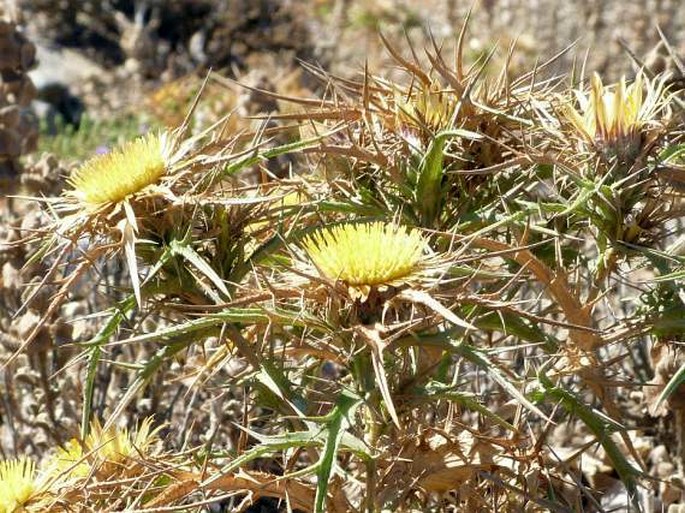Syn.: Carlina actinobola (Halácsy) Heldr., Carlina corymbosa subsp. actinobola (Heldr. ex Halácsy) Rech. f., Carlina corymbosa var. graeca (Heldr. et Sart.) Boiss., Carlina corymbosa subsp. graeca Nyman, Carlina corymbosa subsp. rothii (Boiss.) Arcang., Carlina rothii (Heldr. et Sart. ex Boiss.) Halácsy
Family: Asteraceae Bercht. et J. Presl

Distribution: Mediterranean species – Balkan peninsula and Aegean region, from Croatia to Turkey.
Ecology: It grows on dry slopes, in open woods and thickets, in phrygana, up to 1400 m asl. Blooms from July to October.

Description: Perennial herb, (10–)20–50(–80) cm tall, usually subglabrous. Stem erect, branched, arising from an underground rhizome. Leaves alternate, oblong-lanceolate to ovate, dentate to pinnatisect, 9 × 3 cm, undulate, with strongly spinose margin, the margin between the principal spines usually finely spinose-dentate. Capitula 12–20 mm in diameter, solitary on short branches, forming a rather dense corymb; involucral bracts in several rows, the outer exceeding the inner by 15–20 mm, the inner entire, scarious, 10–16 × 1,5–2,5 mm, rigid, bright or brownish yellow; florets all hermaphrodite; corolla 5-lobed, yellow. The fruit is an achene, c. 2,5 mm, with pappus.



These images were taken in Greece, Kos Island, Mt. Dikeos (August 19, 2011).


